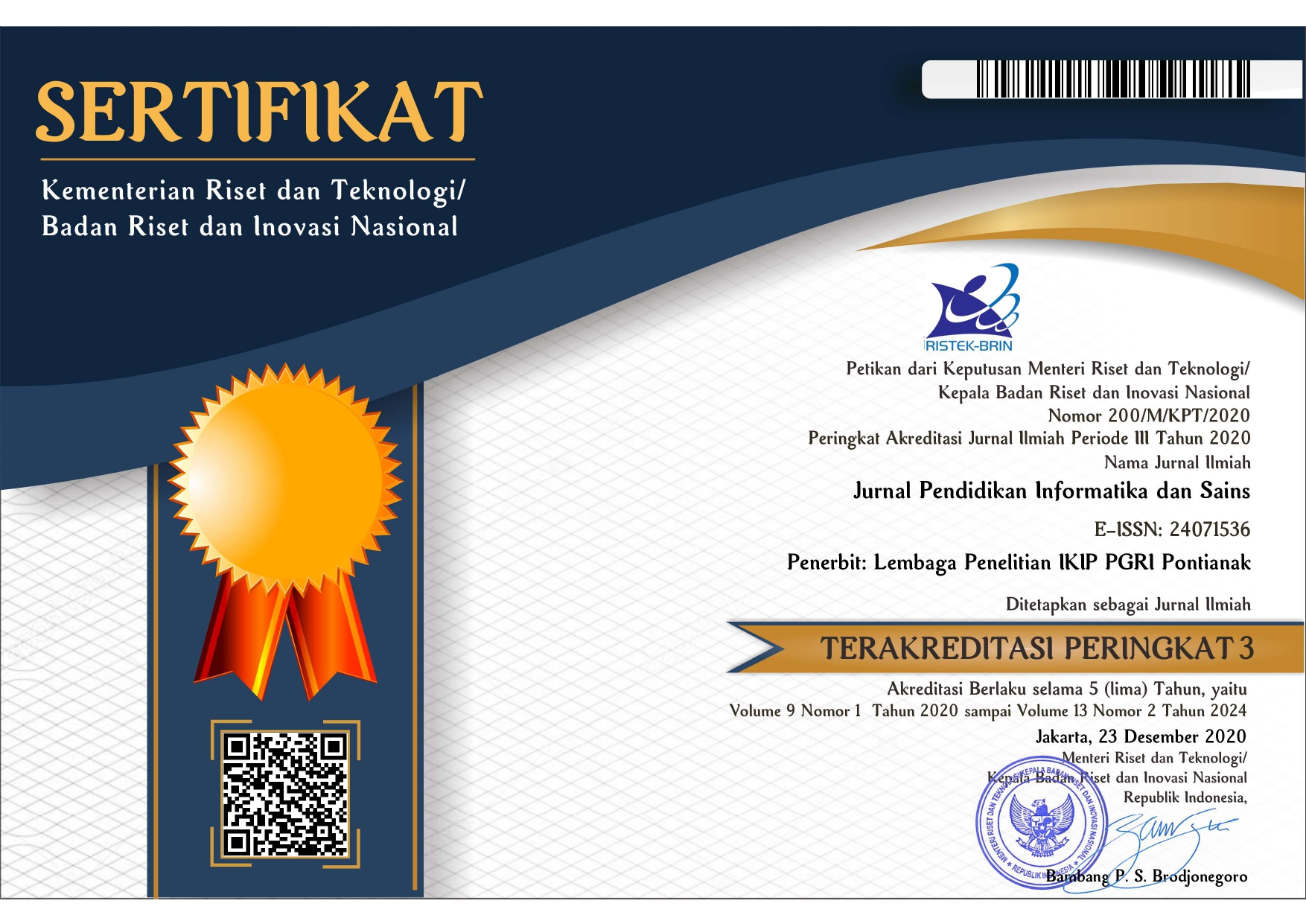Teknologi oven anealling kaca tellurite berbasis mikrokontroller dengan bahan bakar bio-briket
DOI:
https://doi.org/10.31571/saintek.v11i1.3589Keywords:
Bio-Briquettes, Oven, Anealling, Glass, ArduinoAbstract
The A process known as annealing is important for reducing stress in working optical materials. The problem that arises is that the annealing process requires a large amount of heat energy or total heat. The purpose of this research is to reveal the thermal stability curve of an oven with bio-briquette fuel that works at the average temperature of the annealing process; 2. To obtain the optimal value of the use of bio-briquette fuel at several set temperatures of the tellurite glass annealing process. This research uses laboratory experimental research methods. The results show that: preheating with a time of 8 minutes produces an average oven temperature above the bio-briquette coals of 418 oC. Oven with bio-briquette fuel that works stably at a temperature of 471 oC with a preheating time of 5 minutes; The modification results resulted in the oven's ability to heat stably at 363.6oC for 4 hours using three coconut shell bio-briquettes with a size of 2 x 1.5 x 1.5 cm.
Downloads
References
Adhani, L., Masrya, M.A., Octavia, S.I & Sindiany, I.I. (2019). Analisis Bahan Bakar Alternatif Komposit Biobriket dari Eceng Gondok Dengan Perekat Kotoran Sapi. Al-Kimiya, 6(2); 81-86.
Aridito, M. N. & Cahyono, M. S. (2019). Pengaruh laju pemanasan dan laju hisap gas pada proses pirolisis twin retort rocket stove terhadap karakteristik bioarang dari briket limbah serbuk kayu. Makalah disajikan dalam seminar nasional inovasi dan aplikasi teknologi di industri. Institut Teknologi Nasional, Malang, 2 Februari.
Fusari, F. (2011). Continuous wave and modelocked femtosecond novel bulk glass lasers operating around 2000 nm. PhD Tesis tidak diterbitkan. Skotlandia: University of St. Andrews.
Higgins, R. A. (2006). Materials for engineers and technicians. Burlington: Newnes.
Kholilah, I & Al Tahtawi, A. A. (2016). Aplikasi arduino-android untuk sistem keamanan sepeda motor. Jurnal Teknologi Rekayasa, 1 (1): 53-58.
Mallawany, R. E. Dirar, AM. & Ahmed, IA. (2008). New tellurite glass: optical properties. Journal of Materials Chemistry and Physics, 109 (1), 291-296.
Mandasini, Sungkono, Pawennari, A., Ahiruddin. (2016). Analisis Kinerja Tungku Berbahan Bakar Bio-Briket. Journal of Chemical Process Engineering, 01 (01): 25-32.
Pal, B. P. (2006). Guided wave optical components and devices basics technology and applications. Burlington: Elsevier Academic Press.
Rifdah, Herawati, N & Dubron, F. (2017). Pembuatan Biobriket Dari Limbah Tongkol Jagung Pedagang Jagung Rebus dan Rumah Tangga Sebagai Bahan Bakar Energi Terbarukan Dengan Proses Karbonisasi. Distilasi, 2(2): 39-46.
Susanti, P. D., Wahyuningtyas, R. S. & Ardhana, A. (2015). Pemanfaatan gulma lahan gambut sebagai bahan baku bio-briket. Jurnal Penelitian Hasil Hutan, 33 (1): 35-46.
Vachlepi, A & Suwardin, D. (2013). Penggunaan Biobriket Sebagai Bahan Bakar Alternatif dalam Pengeringan Karet Alam. Warta Perkaretan, 32(2), 65 – 73.
Downloads
Additional Files
Published
How to Cite
Issue
Section
License
In submitting the manuscript to the journal, the authors certify that:
- They are authorized by their co-authors to enter into these arrangements.
- The work described has not been formally published before, except in the form of an abstract or as part of a published lecture, review, thesis, or overlay journal. Please also carefully read Jurnal Pendidikan Informatika dan Sains Posting Your Article Policy at http://journal.ikippgriptk.ac.id/index.php/saintek/about/submissions#onlineSubmissions
- That it is not under consideration for publication elsewhere,
- That its publication has been approved by all the author(s) and by the responsible authorities – tacitly or explicitly – of the institutes where the work has been carried out.
- They secure the right to reproduce any material that has already been published or copyrighted elsewhere.
- They agree to the following license and copyright agreement.
Copyright
Authors who publish with Jurnal Pendidikan Informatika dan Sains agree to the following terms:
- Authors retain copyright and grant the journal right of first publication with the work simultaneously licensed under a Creative Commons Attribution License (CC BY-SA 4.0) that allows others to share the work with an acknowledgment of the work's authorship and initial publication in this journal.
- Authors are able to enter into separate, additional contractual arrangements for the non-exclusive distribution of the journal's published version of the work (e.g., post it to an institutional repository or publish it in a book), with an acknowledgment of its initial publication in this journal.
- Authors are permitted and encouraged to post their work online (e.g., in institutional repositories or on their website) prior to and during the submission process, as it can lead to productive exchanges, as well as earlier and greater citation of published work.

 Download: 78
Download: 78








